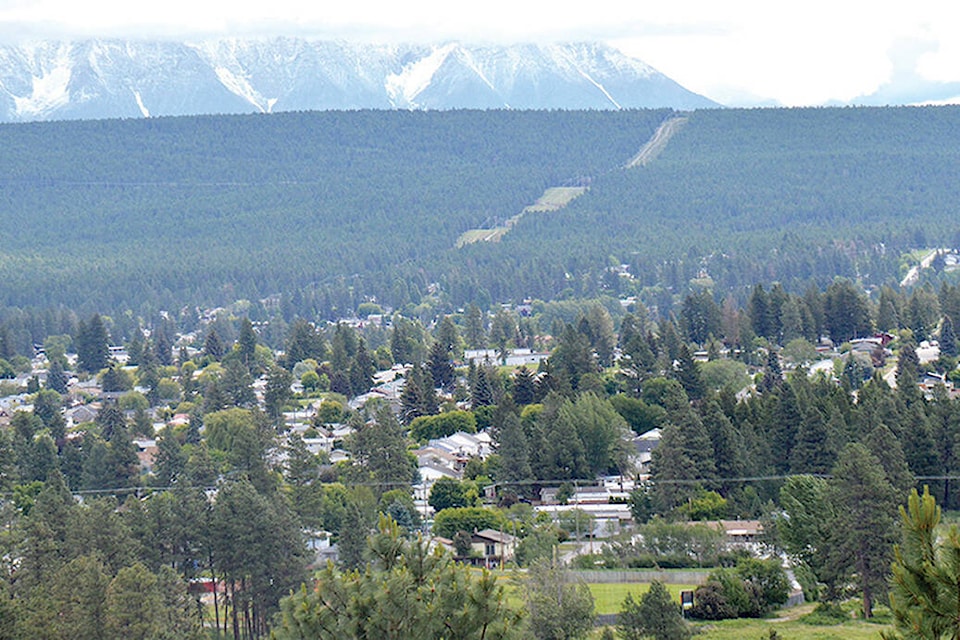The Kootenays saw relatively strong population growth over the last year, however a shortage of housing supply is cause for affordability concerns in the region, according to a report from the Chartered Professional Accountants of British Columbia.
Last year, the Kootenays added 1,643 new residents, which brings the regional population to 164,808, according to BC Check-Up: Live, an annual report issued by the CPABC.
“This is a welcome increase after 2020, when the region added just 1,080 new residents, our lowest growth since 2012,” said Mike Calder, a Certified Public Accountant (CPA), Chartered Accountant (CA), and partner at BDO Canada. “The growth in 2021 was largely due to the region’s ability to attract residents from other provinces, while our natural growth continued to decline.”
The CPABC reports 2,056 residents from other provinces moved to the Kootenays last year, including the addition of 369 residents from other areas of British Columbia. The majority of all new residents were 39 years and younger, however deaths continued to outpace births, affecting negative natural growth by reducing the population by 601.
The 65-plus age group is the only age group to increase as a per cent of the population over the last decade in the Kootenays, which currently makes up approximately 24 per cent.
“It is positive news that the Kootenays is drawing younger residents from across Canada and from other parts of our province,” said Calder. “Particularly as our steadily aging population is the second oldest in the province, and our natural growth has become increasingly negative over the past decade. While attracting new residents is critical, the region’s limited housing supply poses a challenge.”
The CPABC reports that only 808 housing units were created in Cranbrook and Nelson between 2017-2021, even though the Kootenay region added 7,689 residents over that four-year period.
“We need to ensure there is accessible and affordable housing,” said Calder. “Over the past decade, housing supply has not kept pace with the number of people moving here. However, it was promising to see the number of housing units completed reach 254 in 2021, the greatest amount in the past 10 years. Nevertheless, the ongoing demand and limited supply our region is experiencing have contributed to housing prices reaching new highs this year.”
Housing affordability is a key issue faced not just in the Kootenays, but across B.C. and Canada.
While housing prices can vary wildly within the region in markets such as Fernie, Revelstoke, Cranbrook and Trail, the average home price in the Kootenays exceeded $500,000 for the first time in 2022. The CPABC report also identified the average rental rates for a one-bedroom in Cranbrook at $785, a 3.2 per cent increase over 2020.
The $785 figure is taken from rental data tracked collected by the Canadian Mortgage and Housing Corporation.
Relative to the rest of the province, housing prices in the Kootenays are lower than those in Metro Vancouver or Vancouver Island.
The average home in British Columbia, buoyed by prices in the larger urban centres, reached $980,324 in May.
According to a report released by the CMHC, the housing stock will reach close to 19 million units by 2030, based on the current pace of new construction. However, in order to restore affordability, the CMHC projects a further 3.5 million units are needed, bringing the housing stock to 22 million units, by 2030.
“The scale of the challenge identified in this report is more important than the exact number of housing units required. Canada’s approach to housing supply needs to be rethought and done differently. There must be a drastic transformation of the housing sector, including government policies and processes, and an ‘all-hands-on-deck’ approach to increasing the supply of housing to meet demand.”
The report also identified that two thirds of the supply gap is found in Ontario and British Columbia, as both provinces have faced large declines in housing affordability.
trevor.crawley@cranbrooktownsman.com
Like us on Facebook and follow us on Twitter
Want to support local journalism during the pandemic? Make a donation here.
